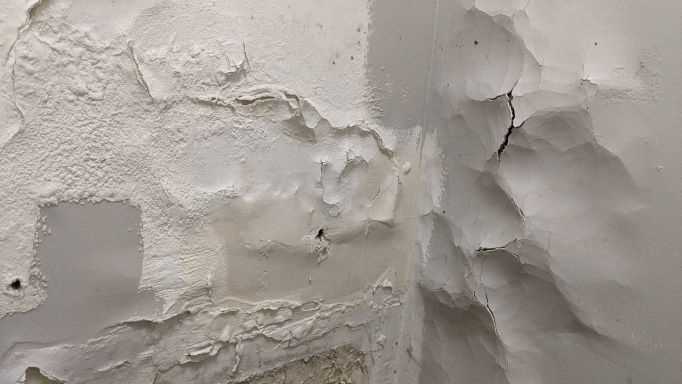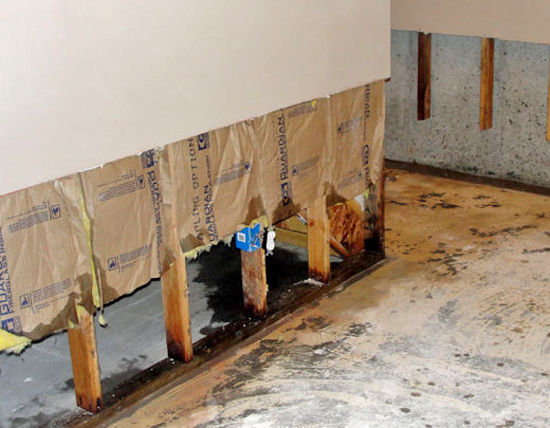Steps for Detecting and Repairing Water Stains on Walls: Inspection
Steps for Detecting and Repairing Water Stains on Walls: Inspection
Blog Article
The publisher is making a number of good pointers about How to Find and Repair Water Leaking in the Wall overall in this great article underneath.

Water discolorations on wall surfaces are not enjoyable to the eyes. Your house ought to lack spots on the walls, roofing, or floors. That is the excellent state of a home and also its structures. Yet, sometimes it appears almost unpreventable to experience water stains on walls in houses.
House owners living in humid regions constantly deal with the anxiety of water discolorations on wall surfaces. With well-rounded and accurate info on the causes of water discolorations and also prompt repair processes, you will always be a step ahead of such incidents.
3 Usual Sources Of Water Stains on Walls
As opposed to popular belief, water stains on walls do not always come from bad structure products. There are a number of sources of water discolorations on wall surfaces. These include:
Poor Drainage
When making a building strategy, it is critical to make sure appropriate drainage. This will certainly avoid water from permeating right into the walls. Where the drainage system is obstructed or missing, underground moisture accumulates. This web links to extreme wetness that you see on the wall surfaces of your building.
So, the leading cause of wet walls, in this instance, can be an inadequate water drainage system. It can also result from bad management of sewer pipelines that go through the structure.
Moist
When hot wet air consults with dry cool air, it causes water beads to base on the walls of structures. When there is steam from cooking or showers, this occurs in kitchen areas and restrooms. The water beads can discolor the surrounding walls in these parts of your residence as well as spread to various other areas.
Wet or condensation affects the roofing as well as wall surfaces of buildings. When the wall surface is damp, it creates a suitable atmosphere for the development of fungi and microorganisms.
Pipeline Leaks
The majority of homes have a network of water pipes within the wall surfaces. This ensures that the pipes are faraway from the reach of devastating rodents. It constantly increases the practicality of such pipelines, as there is little oxygen within the wall surfaces. This discourages rust.
A downside to this is that water leakage impacts the walls of the structure and also creates prevalent damage. An indication of malfunctioning pipelines is the look of a water tarnish on the wall surface.
Water Stains on Wall: Repair Work Tips
Property owners would normally desire a quick fix when taking care of water discolorations. They would certainly quickly understand this is counterproductive as the water stains persist. So, below are a couple of useful suggestions that will direct you in the repair service of water discolorations on wall surfaces:
Pro Pointer
A houseplant in your home also boosts its humidity. If the residence is currently damp, you may want to present houseplants with marginal transpiration. An example of suitable houseplants is succulents.
Verdict
No one wants to have water spots on walls in their residence, it can occur to the best of us. This post gives you utilize, as you now know how to manage this mishap if it does take place.
It is always best to hire professional solutions to help take care of the problems in your home.
Sometimes it seems nearly unavoidable to experience water discolorations on walls in residences.
Contrary to prominent belief, water spots on wall surfaces do not always stem from bad building materials. There are a number of causes of water discolorations on walls. The water beads can tarnish the surrounding walls in these parts of your house and also spread to other locations.
Here are a few practical tips that will certainly guide you in the repair service of water discolorations on walls:
CHECKING FOR WATER DAMAGE
Water damage can be costly, and it may begin before you even notice the first signs of trouble. Water damage can cause mold and mildew in your walls and floors, which can create an abundance of health concerns for your family. It can also lead to costly repairs of various appliances and general home fixtures. To avoid the pricey consequences of water damage, here are Warner Service s top 5 places you should check:
The walls The easiest place to spot the beginnings of water damage is on the walls and ceilings of your home. If water damage is present, there will most likely be water stains, especially around the windows and doorframes, and/or cracks in the drywall. If a stain looks unusual (discolored to brown, black or gray, raised texture), has a swollen appearance or is soft to the touch, contact a professional immediately. The pipes To avoid water damage, consistently check the pipes in your kitchen (especially the dishwasher and ice maker), bathrooms, laundry room (specifically washing machines) and basement for corrosion, leaks and water stains. Pay special attention to where the pipes connect in your home and the location of caulking around the bathroom fixtures, including toilets, sinks, showers and tubs. Missing or loose caulking and grout could be signs of leaking water. This seepage can also quickly cause mold and rust, so double check your water heater and tank for wet spots on the floor. The floor Water damage is very easy to spot on the floor. Look for any warping or buckling of the material, especially in the basement. If your home has wood flooring, look for bright white or dark stains. If your home has carpeting, keep it dry and clean. A damp carpet that smells of mold could cause water damage and health problems. To avoid this, consider installing floor pans under your appliances to help prevent damages from small, slow and undetected leaks. The basement and attic If your basement or attic smells odd check for mold and mildew around the area, especially the valley where the roof meets. While you are inspecting those areas, check for wall cracks, floor stains, rust and dampness in the insulation. If you live in a colder and/or rainier climate, perform routine checks for water damage from melting snow or ice and rain. The exterior Check the roof for damaged flashing and missing, cracked or curled shingles. There should also be no standing water anywhere outside your home. This could be caused by puddles, leaky rain gutters or hoses, poor drainage, or short gutter spouts. Invest in a sump pump system or water flow monitoring system, and perform routine maintenance on these outdoor appliances to avoid indoor water damage.

I am very enthusiastic about Indicators of Water Damage Behind Walls and I am assuming you liked my piece. Sharing is good. One never knows, you might be doing someone a favor. We enjoy reading our article about How to Remove Water Stains from Walls and Ceilings.
Visit Website Report this page